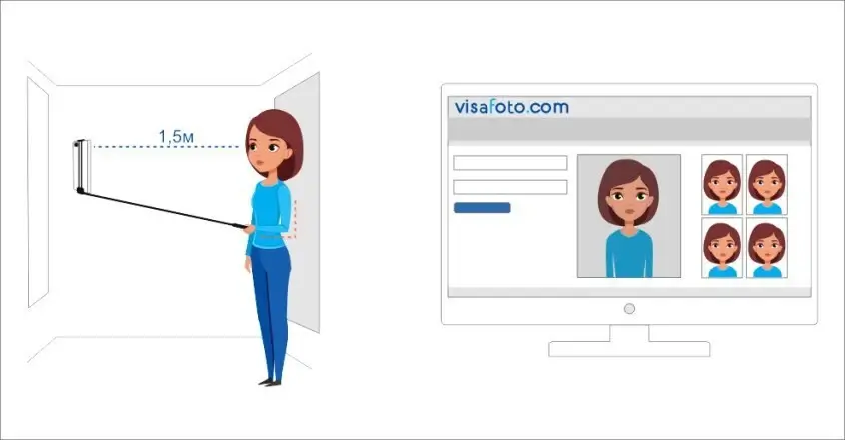Italy’s Digital Nomad Visa Guide
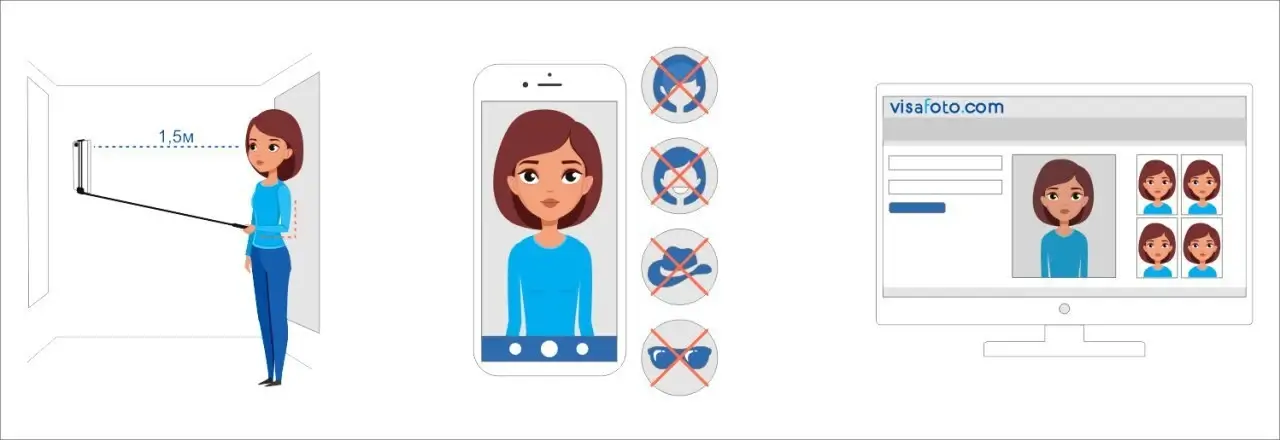
Italy now officially welcomes remote professionals through its digital nomad visa program, offering a legal pathway to live and work in one of Europe's most inspiring destinations.
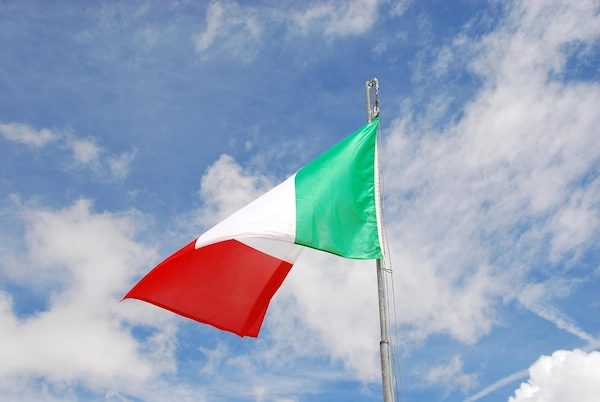
This article will cover everything you need to know about how to apply for an Italy's digital nomad visa, including the requirements and how to simplify the process with a compliant visa photo.
Table of contents
- What is the Italy Digital Nomad Visa?
- Italy Digital Nomad Visa eligibility and requirements
- Italy Digital Nomad Visa application process
- Documents required for the Italy Digital Nomad Visa application
- Italy visa photo requirements
- Get your visa photo online!
- Visa Photo App
- Italy Digital Nomad Visa fees
- Italy Digital Nomad Visa validity and renewal
- Taxes for digital nomads in Italy
- FAQ
What is the Italian Digital Nomad Visa?
The Digital Nomad Visa, officially launched in 2024, permits citizens from outside the EU/EEA to reside in Italy while working remotely for employers or clients based in other countries. This visa specifically targets skilled professionals like freelancers, consultants, and remote workers who can fully conduct their work online.
Key benefits of the visa include:
- Legal residence and remote work rights in Italy for one year, with the option to renew.
- Family members, including spouses and children, can also gain residency permits.
- Access to Schengen zone travel, educational opportunities, and healthcare services.
- Potential pathways to long-term residency and citizenship after five and ten years, respectively.
Eligibility and requirements
The Italy's digital nomad visa is available to non-EU/EEA individuals who work remotely for non-Italian employers or clients and meet certain income, education, and professional criteria:
- Must be at least 18 years old and a non-EU/EEA national.
- Engage in remote work as a freelancer, self-employed individual, or as an employee of a non-Italian company.
- Have a minimum of six months of remote work or professional experience, supported by documents like contracts or reference letters.
- Possess a university degree or a similar qualification relevant to your field; alternatively, some consulates may accept three to five years of skilled experience.
- Maintain a clean criminal record for at least the previous five years.
- Obtain a letter from your employer verifying that the work is remote and adheres to Italian labor regulations.
Financial prerequisites include:
- A minimum annual income ranging from €25,000 to €28,000, depending on the consulate's requirements.
- Additional income needed for family members:
- €780 per month for each adult dependent.
- €130 per month for each child.
- Proof of sustainable income through verified sources such as bank statements, invoices, or tax documents.
Once your visa is approved and you arrive in Italy, you have eight days to apply for a residence permit (Permesso di Soggiorno) at the local Questura police station, ensuring your legal stay for the visa's duration.
Italy's Digital Nomad Visa application process
To apply, follow these steps:
- Gather all necessary documents, described below in the article.
- Schedule a visit to your nearest Italian Embassy or Consulate. It's a good idea to book your appointment as early as possible since slots can fill up quickly.
- At your appointment, submit your visa application along with the required documents and pay the fee, which is typically between €120 and €130. Some consulates may also ask for an in-person interview to assess your work experience and eligibility. During this visit, you might need to provide biometric data like fingerprints and a photo.
- Wait for your application to be processed, which usually takes between 4 and 12 weeks, depending on the consulate's workload and other factors related to your nationality. Once approved, a visa sticker will be placed in your passport, granting you the right to live in Italy for a year as a remote worker.
- After you arrive in Italy, you need to apply for a residency permit (Permesso di Soggiorno) at the local Questura within 8 days of your arrival.
Documents required for the Italy's Digital Nomad Visa application
When applying, you’ll need to provide:
- A valid passport with at least six months of validity remaining.
- A completed and signed application form.
- Recent passport-sized photos.
- Proof that you meet the annual income requirement of €25,000 to €28,000, plus additional funds for any dependents (€780 per additional adult and €130 per child).
- Documentation showing your remote work status, such as employment contracts or freelance agreements with non-Italian clients.
- Evidence of at least six months of previous remote work experience.
- Proof of accommodation in Italy, which could include a lease, property deed, or hotel reservation.
- Health insurance that covers at least €30,000 in medical and repatriation expenses and is valid throughout Italy and the Schengen area.
- A clean criminal record, with documents apostilled and translated into Italian if required.
- Proof of a university degree or relevant professional qualifications.
Ensure all documents from abroad are apostilled and translated into Italian by a certified translator before submission to guarantee acceptance by the consulate.
Italy visa photo requirements
The photos for your nomad visa application should meet the standard Schengen visa photo guidelines. These include:
- Dimensions of 35 mm wide by 45 mm tall (1.38 × 1.77 inches).
- If submitting digital photos, they should be in JPG or PNG format, with a typical file size limit of 120 KB.
- The face should cover 70-80% of the photo, which translates to approximately 32-36 mm of the photo's height.
- A uniform white or light-colored background with no patterns, shadows, or objects.
- High-quality, color photos with at least 400 dpi resolution, clear focus, and printed on good-quality photo paper if providing physical copies.
- The face must be fully visible and directly facing the camera, maintaining a neutral expression without smiling.
- Glasses are allowed only if they do not cover the eyes or reflect light, and tinted glasses are not permitted.
- Head coverings are allowed only for religious or medical purposes, provided they do not obscure facial features.
- Photos should be recent, taken within the last six months.
Here is an example of a photo:
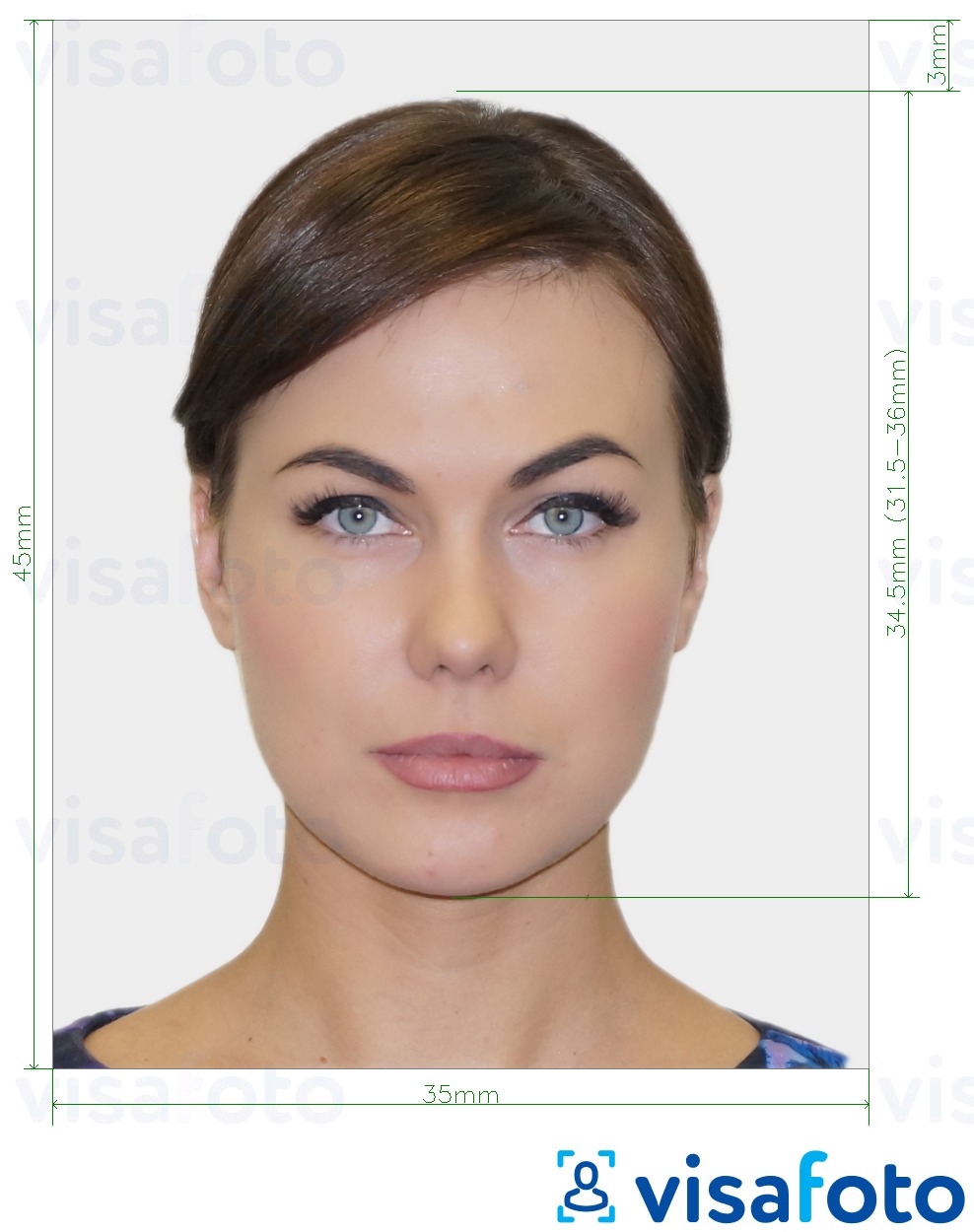
Get your visa photo online!
Make the process of getting your visa photo hassle-free with Visafoto.com, a service boasting an impressive 99.7% approval rate. Simply snap a picture of yourself in natural light using your smartphone or camera, and upload it to Visafoto.com. The tool will automatically adjust the background, resolution, color, and size to fit the required standards.
Here is an example of the photo you can upload:
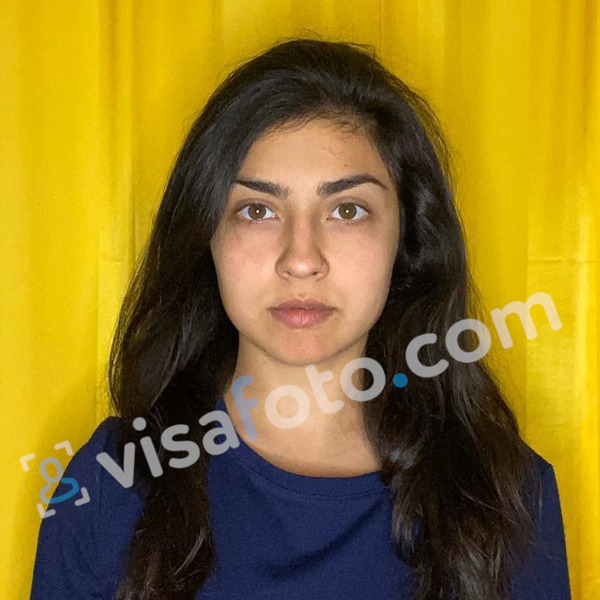
Once processed, you'll receive a digital version suitable for online submissions and a print-ready format as well. If you're not satisfied with the results, we'll gladly provide a free redo. Additionally, if officials reject the photo, you are eligible for a full refund.
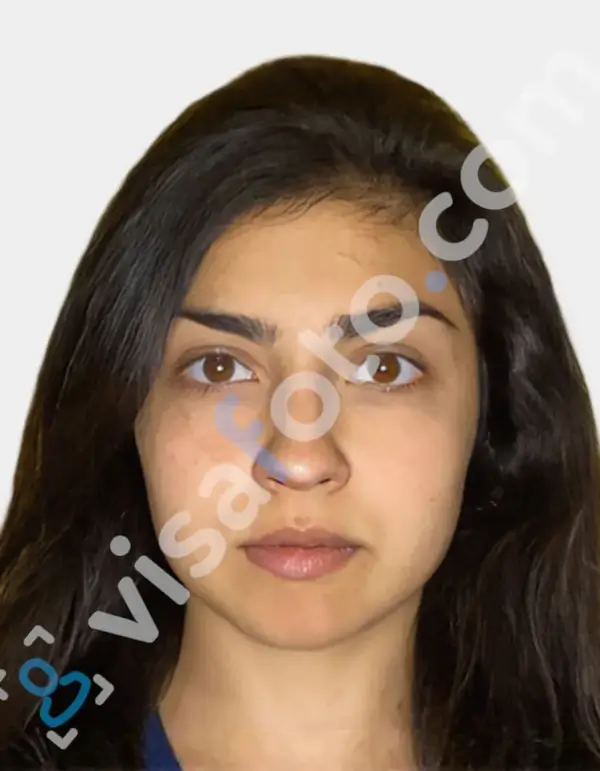
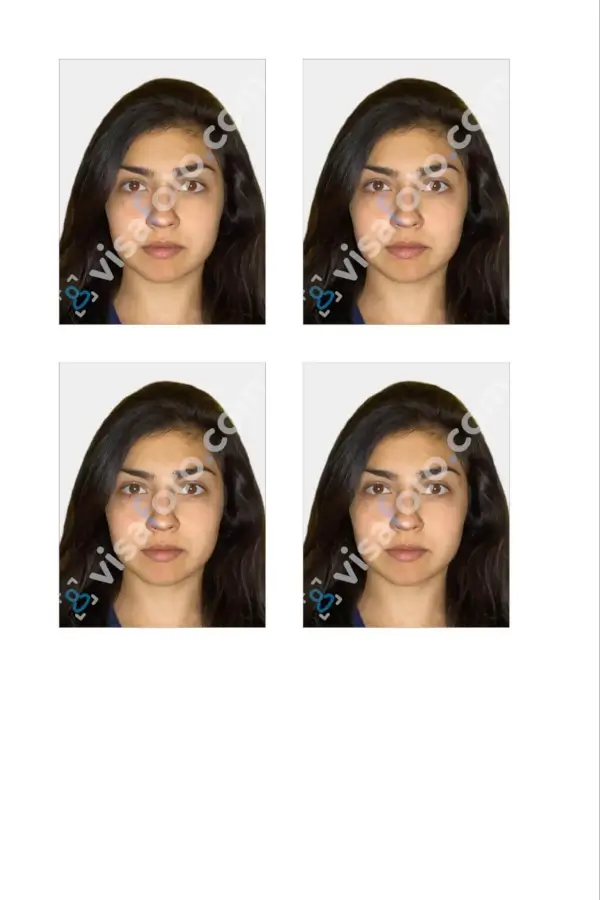
Visa Photo App
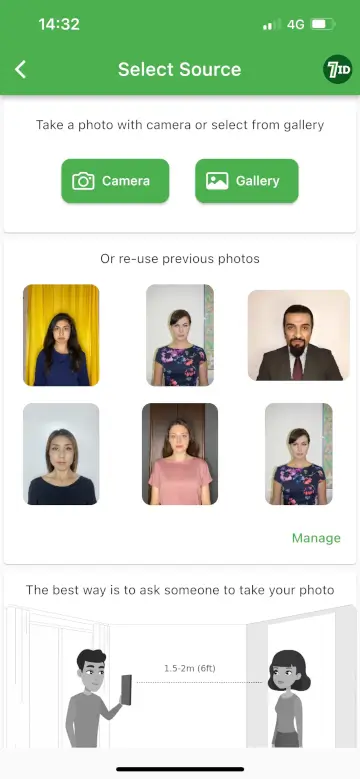
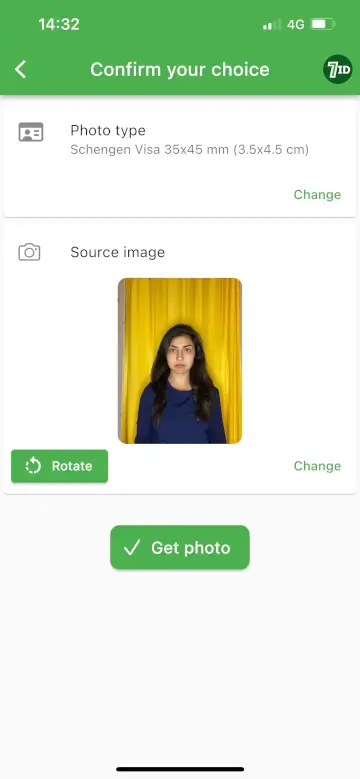
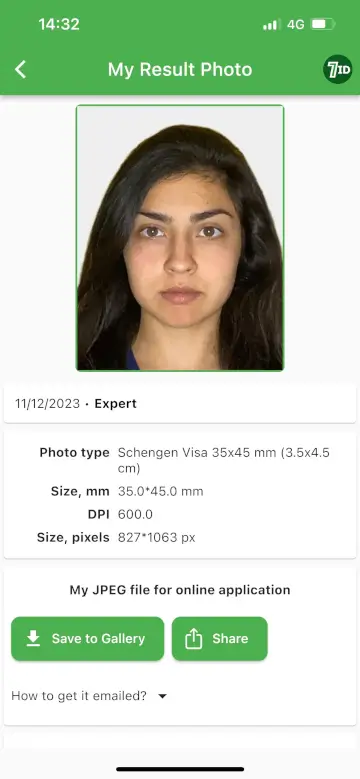
Easily capture your Italy visa photo from anywhere globally with the 7ID App by Visafoto.com. This straightforward app simplifies the creation of ID, passport, and visa photos using your smartphone, making it accessible for both iPhone and Android users.
Just upload your picture, pick the type of document and the country, and let the app take care of sizing, format, and background modifications. It ensures your photo's face and eye line are perfectly aligned. You'll get both a digital file and a print template compatible with sizes like 4x6, A4, A5, or B5.
Our technical support team is available 24/7 to assist you with any questions or concerns.
Italy's Digital Nomad Visa fees
For October 2025, the costs associated with the digital nomad visa generally include:
- Visa application fee: Roughly €116, to be paid when you submit your application at the Italian consulate or embassy. This fee is non-refundable and may change based on updates from the Italian government.
- Residence permit fee (Permesso di Soggiorno): Upon entering Italy, you'll need to apply for a residence permit within eight days. This can cost between €70 and €100, depending on the local authorities at the Questura.
- Revenue stamp (Marca da Bollo): Frequently, a stamp duty payment of €16 is required for processing official documents.
Italy Digital Nomad Visa validity and renewal
Italy's digital nomad visa is initially granted for a period of one year from the date it is issued, allowing you to legally live and work remotely in Italy.
If you wish to continue your stay, both the visa and the associated residence permit (Permesso di Soggiorno) can be renewed each year, provided you still meet the initial eligibility criteria. Renewals must be completed before the existing residence permit expires, usually at the local police headquarters (Questura). You will need to submit updated documentation that verifies your continued remote employment and income.
After maintaining legal residence in Italy for five consecutive years through the digital nomad or other residence permits, you may apply for permanent residency. Furthermore, after ten years of continuous residence, you may be eligible to apply for Italian citizenship under the naturalization laws.
Taxes for digital nomads in Italy
You will be considered a tax resident of Italy if you:
- spend more than 183 days in the country within a calendar year;
- have a permanent home within Italy;
- maintain primary social or economic connections in Italy.
Digital nomads may qualify for specific favorable tax regimes, such as the "regime forfettario." This offers a flat tax rate of between 5% and 15% on annual income up to €85,000, subject to certain conditions.
Tax responsibilities:
- As a tax resident, you are required to declare and pay taxes on your global income to the Italian tax authorities (Agenzia delle Entrate). Italy has progressive income tax rates, which range from 23% to 43% depending on your income bracket.
- If you are not an Italian tax resident (staying fewer than 183 days), you are only taxed on income earned from Italian sources.
- Social security contributions might also be necessary, particularly if you are self-employed.
- Italy has agreements with numerous countries, including the US, UK, and Japan, through Double Taxation Treaties which help prevent paying taxes on the same income in more than one country.
FAQ
Can I apply for the digital nomad visa while already in Italy?
No, you must apply from your home country or a country where you legally reside, through the Italian Embassy or Consulate there. This long-stay type D visa requires you to submit your application and attend an appointment in person outside Italy.
Can freelancers and self-employed professionals apply?
Yes, freelancers and self-employed individuals are eligible for the Italy's digital nomad visa. It's specifically targeted at non-EU/EEA citizens who work remotely, either as employees for foreign companies or as self-employed individuals providing services to clients outside Italy.
Can I switch from a tourist visa to a digital nomad visa without leaving Italy?
No, you cannot change from a tourist visa to a digital nomad visa while in Italy. This visa type must be applied for from abroad, typically through the Italian Embassy or Consulate in your resident country. Tourist or short-stay visas do not permit a status change to a long-stay visa within Italy.
Are dependents allowed to work or study in Italy?
Dependents included on the Italy's digital nomad visa, such as spouses and children under 18, are generally permitted to study in Italy. However, they do not automatically have the right to work. To work legally, dependents often need to obtain a separate work permit or visa.
Can I apply for permanent residency in Italy later on?
Yes, after living in Italy for five consecutive and legal years under the digital nomad visa or another valid residence permit, you can apply for permanent residency. You need to meet specific requirements such as maintaining your remote work status, reaching a certain income level, registering with Italian tax authorities, and adhering to residency regulations. Once you obtain permanent residency, you can apply for citizenship after an additional five years of residence.
Can digital nomads travel freely within the Schengen Area?
Yes, those with an Italy's digital nomad visa can travel freely throughout the Schengen Zone. Once you obtain the Permesso di Soggiorno (Italian residence permit) through the Digital Nomad Visa, you can move between all 26 Schengen countries without needing additional visas or facing border checks, similar to other Schengen residents.
What type of health insurance do I need for the application?
For your digital nomad visa, you need comprehensive health insurance that covers your entire stay in Italy. The policy should include emergency medical treatment, hospitalization, outpatient services, medical evacuation, and repatriation. The coverage should have a minimum value of €30,000 (approximately $50,000).
Last updated: 2025-10-22
